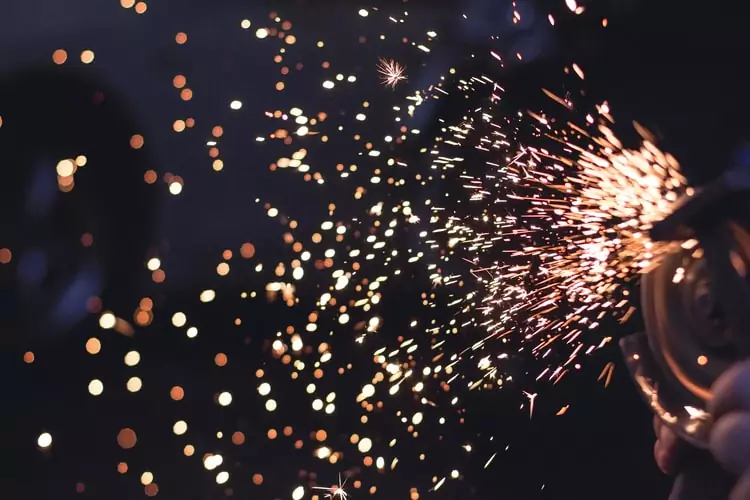
Most workflow projects take the approach of addressing an outcome and then working backwards to build an efficient, linear flow of processes and actions. Designing steps to think through workflow design requirements is essential, but it must be done with a methodology that accounts for all manner of variables, and includes the element of time. Every workflow is intended to deliver faster and/or better returns on work, but process agility and the application of predictive capabilities, translates into additional competitive advantages. The true goal of workflow design is getting to a state of continuous innovation, repeatability, and efficiency, and this is best accomplished by using smart, disciplined thinking.
An effective workflow is liberating for users. They can automate decision making and rely on the application to deliver content and assets to the correct stakeholders, which frees them to focus more on analyzing outcomes and coming up with creative solutions. With the component of time built into workflows design, business users get additional control by having a way to predict events that can be automatically built in to processes, all with the flexibility of being able to intervene as necessary. To take advantage of a timeline-influenced workflow, an organization should structure their workflow design with a framework that takes these elements into account:
Workflow Design - Define Your Requirements
This may sound elementary, but to get the right outcomes, you need to be specific about the results you seek. For example, declaring that you want a workflow for “manufacturing optimization” encompasses a wildly broad set of activities. But breaking that down so you understand the various, separate tasks that help you ultimately achieve manufacturing optimization will enable you to be specific about the upcoming workflows design process.
Tasks, Events, Dependencies – Know Your Process
You’ll need a whiteboard, a really big whiteboard. The best way to get started is to actually diagram the logical sequence for a workflow, and then iterate as you factor in decision points, approvals, assets, sub-workflows, and all other factors that will guide a process from beginning to end. This part of your planning is tactical, and is truly foundational, and the way your workflow design is structured will be among the most important factors on whether or not your workflow management software is successful in achieving intended goals. During this part of the planning, you should be looking out for these things:
- Be thorough and include all information and detail so you know precisely what is required to achieve success at each step.
- Know, document, and account for dependencies at every step of the workflow.
- Highlight gaps where more information is needed to ensure effective process flow, and then fill those gaps.
- Simply where you can, reduce steps, if possible, and be rigorous about eliminating the potential for wasted effort.
Account for Continuous Processes
Also, don’t forget to consider the continuous nature of some processes; for these, a true ending point may not necessarily exist. When that is the case, ensure that workflow stakeholders are prepared to continuously adapt their workflows tools as they integrate more inputs and data into the process.
Assign Roles In Your Workflow Design
Know your stakeholders, whether they be inside or external to the company. Identify which tasks and activities they will be part of, and their level of involvement. This might also be applied in terms of groups or teams, rather than just individuals. For example, some decisions may require the approval of any member of a specified team, while others may need approval from anyone who has a “Vice President” title. And in other instances, decisions might be handled by anyone in a specific team or region. Know how roles are going to be used within your workflows so you can design them for best efficiency.
Apply Timeline Dependencies
A typical flowchart lays out “what happens next”, but when you apply timeline approach to your workflow design, it forces you to think, “what must be completed before this step can begin, and how long will it take?” These questions help you to imprint process efficiency improvement and governance with a timeline-focused workflow design, and provide additional control by allowing integrating predictive elements, and allowing for human intervention if a task isn’t expected to complete on time. Typical workflow processes may include an approval step, but usually fail to communicate when the task or full process will complete.
Know What You Need to Integrate - Inputs and Outputs
Today’s workflows can be so powerful because of the amount and type of data available within a typical organization’s IT infrastructure, and through integration of data from partner and customer sources. To get the power of all this data, you need to identify which inputs will inform your workflow, and how that data will be incorporated into it. Typical integrations come from applications like these:
- Database Application Integration
- Document Imaging Software / Scanners
- File System Monitor Application Integration
- Email Servers
- Web Services / REST
- Social BPM Application and Workflow Application Integration
- SharePoint or other file-related applications
After identifying these, you will need to build requirements for the tactical implementation of your integrations. This might come in the form of pre-packed integrations or with vendor-provided APIs. Your team may need to build custom integrations, so you’ll need to account for the resources and time required to do all this work.
Review Your Workflow Design
This isn’t just a “check my work” step; it’s really intended to give all stakeholders an opportunity to provide input and change anything that isn’t supposed to be part of the workflow. Additionally, it allows you to take a step back and evaluate whether or not the structure of your workflow is still capable of meeting your intended goals.
Automate Your Workflows
By automating workflows, organizations will be able to dramatically reduce cost and improve efficiency. Automation allows them to handle every manner of workflows and sub-workflows so there is repeatability and consistency, all while freeing time to focus on more strategic issues of the business. Workflow automation enables teams to do the following:
- Build processes and create forms to meet changing business goals.
- Access data that can help with decision-making and meeting workflow milestones.
- Efficient approval handling.
- Insight and visibility into all aspects of processes.
Business goals involve increasingly complex levels activity and collaboration in order to achieve them. Workflows, however, don’t need to be overly complex, and this is why they provide huge benefits. Developing and codifying workflows removes barriers to speed and alleviates the stop-start cadence that trips up too many organizations.
While there is not a single way to develop and manage workflows, adhering to a smart framework of workflow design can help organizations improve their operational capabilities and achieve better outcomes.



